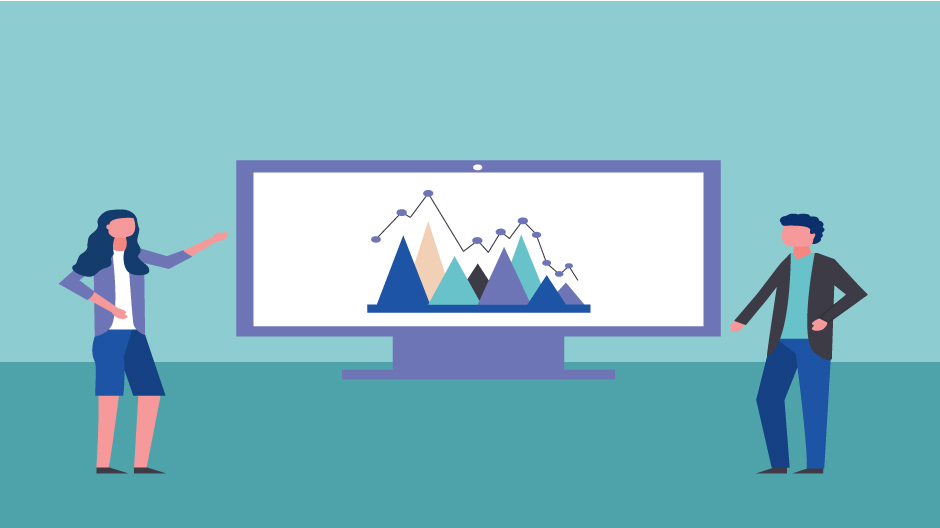In order to describe the number of single-page sessions that occur on your website, Google employs the phrase “bounce rate.” If a user begins their journey on Google, clicks on your website, and interacts with the material on your page, but then clicks back to the search engine results page (SERPs) or shuts the window, then the user will be considered to have bounced, and their buyer’s journey will come to an end at that point.

The term “bounce” refers to any activity that does not entail clicking through to another page on your website or doing anything else that involves engaging with your domain. Your bounce rate will be affected by a number of factors, including the kind of content you provide, the area in which you work, and even the origin of the visitor before they arrive at your page.
So, what exactly is a good bounce rate?
It can be difficult to identify what constitutes a good bounce rate, and it can vary greatly from one website to another and even from one page to another within the same website. Take, for instance, websites that are dedicated to blogging. The reason that blogs typically have high bounce rates is that their primary objective is to provide a solution to a particular query that is posed by individual readers.
For instance, if someone is interested in learning how to optimize their website for the holiday season, they might click on a blog post that claims to provide an answer to that topic. On the other hand, this does not imply that they ever intended to engage in additional interaction with the brands that provide the content; rather, they were simply looking for an answer to their inquiry.
In a similar vein, pages that offer specialized information, such as those that contain contact information, will typically have high bounce rates. The majority of the time, those who are looking for this information will search for it on Google, click on the website to discover the answer they are looking for, and then click on it once they have satisfied their requirements. Now that they have the resources to do so, these individuals are interested in getting in touch with the company.
There is no further motivation for them to browse elsewhere on the website. What can be considered to be a healthy bounce rate will also be influenced by the types of websites and the businesses in which they operate. It is common practice for e-commerce websites, for instance, to anticipate that customers may wander over their website while they are shopping for specific products and evaluating their available alternatives. It is for this reason that websites of this sort should strive to achieve bounce rates that are lower than 45% overall.
When the bounce rate of a website falls below sixty percent, websites that are not related to e-commerce should consider their bounce rate to be average to good. It is important to keep in mind that the bounce rates of different pages on your website tend to vary from one another. When compared to material that assists individuals in traveling the trip to comprehend your products and services, the bounce rates of your blog and landing pages will be higher.
How to achieve a good bounce rate?
Your ability to better understand what your customers want to see on your website is the key to improving your bounce rate. This will allow your customers to interact with your content and feel interested in exploring your website further. In the event that your bounce rate does not fall where you would like it to, the following are some suggestions that you may use to work towards improving your bounce rate.
- Ensure that the page is adequately connected to the rest of the website
Your goal is to make it simple for customers to find useful links that will assist them in navigating the site with ease. By including connections to additional sites that your readers might find interesting depending on the material that they are presently consuming, you can increase audience engagement.
It will be beneficial to provide content that either provides more information about specific themes or provides them with deeper detail regarding this particular issue. It is imperative that you refrain from connecting to pages that are broken, such as orphan pages.
- Ensure that your call to action is really meaningful
The content that your reader consumes should have a strong connection to your call to action. For example, a smart place to begin would be to provide links to content that is limited in access and provides additional information regarding the subject at hand.
If you want to take this tactic to the next level, you should investigate the areas of your website that your users focus their attention on the most. Putting your call to action higher on the page is something you may do if you observe, for instance, that people pay more attention to the top of your page.
- Ensure that your page has been optimized for a variety of potential users
If visitors from a number of different nations are able to access your website, you need to ensure that the information has been translated accurately and is prepared for use by citizens of these various countries. To guarantee that the content is presented in a manner that is accurate and natural for people reading it in your various locations, you should collaborate with local translators.
- The user experience should be maximized
When someone visits your website, you want to provide them with the best possible experience. This indicates that your website ought to be:
- Simple in its operation
- Applicable to their requirements
- Friendly to the eye and easy to read
What you know about your visitors ought to be reflected in the content that they view on your website. When a visitor has previously visited the website, it can be helpful to provide content recommendations based on the visitor’s previous interests. People can be guided throughout the site with the help of unambiguous navigation and site maps.
Additionally, your bounce rate will benefit from content that is well-aligned with the query that brought people to the page and, as a result, fulfills the needs of those people. So, the utilization of elements such as headlines, bullets, and lists makes the material simpler to comprehend and easy to digest, which in turn makes it more interesting for the people who visit your website.
- Accelerate the loading time of your page
A page that takes more than three seconds to load will result in fifty-three percent of mobile visitors to your website leaving as a result. With such a low level of involvement, it will be challenging to achieve a high ranking on the search engine results pages. You need to make every effort to reduce the amount of time it takes for your game to load. Think about things like the categories of files that you have on your website. If you should compress the files on your page, and whether or not your JavaScript causes the rendering process to be slower.
- To drive interaction, use images and videos that are interesting
Facebook posts that include images earn 2.3 times as many shares as those that do not include images. This is because images and videos naturally improve engagement. In addition to attracting visitors to learn more about your company, including photos that are relevant and optimized and that inspire people to completely engage with your content can also help you achieve a positive bounce rate. Just keep in mind that even if you are adding additional images, you should make sure that they do not slow down your load time.
It is important to give careful consideration to the type of file in order to guarantee that it will not affect a good bounce rate. You may make a significant impact on the performance of your content by persuading users to stay on your page and continue to interact with your website. In addition to enhancing Google’s perception of your website, it will also inspire a greater number of individuals to participate in your buyer’s journey. Take into consideration how the following advice can assist you in achieving a decent bounce rate for your domain, and collect statistics on the bounce rates that you wish to see for your content.
Finding out what a good bounce rate is for your specific website-
When determining a suitable bounce rate for your website, you will need to take into account all of the aspects that will influence people’s levels of engagement. These factors include the type of page, the industry, and the manner in which people arrive at your page. This measure will be uniquely tailored to your website in a significant way.
Google Analytics provides valuable information regarding the performance of other websites in relation to these criteria. If you want to get a better understanding of where your objective goals should be for your website, for example, you may look at the typical bounce rates of other websites that are in the same industry as yours.
You should also keep track of where your site currently stands. You should keep track of the bounce rates for the many kinds of pages you have, such as your website pages, landing pages, and blog pages. This will provide you with a starting point that you can compare to as you attempt to optimize your website further in order to get a decent bounce rate.
Make use of the information that is specific to your website in addition to the data that is provided by Google Analytics in order to generate goal bounce rates. Determine the areas in which you have the most opportunity for growth by identifying the pages that perform the worst within particular categories of pages and making an effort to comprehend what differentiates these pages from the ones that do the best.
Conclusion-
In conclusion, it is necessary to make use of technologies such as Google Analytics and others in order to monitor and comprehend the Bounce Rate effectively. Nevertheless, the true value is in the utilization of the data that these tools supply in order to acquire insights that can be put into action, which enables the website to undergo continual improvement in order to increase user engagement and performance. This in-depth post is intended to provide you with an improved knowledge about what a bounce rate is, and how you may increase the bounce rate of your website. We hope that you found it enjoyable and educational.



